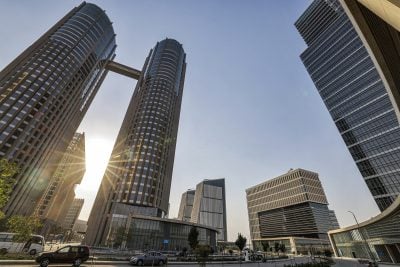South Africa’s banks, like the country’s economy, are bracing for a rough ride. However, the traditional resilience of the banking industry could stand it in good stead. Report by Mushtak Parker
For South Africa, the post Covid-19 outlook seems desperate, as it was one of the few countries to be hit by the pandemic while its economy had entered into recession, its second in two years, in Q4 2019, as agriculture, transport and construction contracted sharply. The last time the economy under President Cyril Ramaphosa’s watch had two consecutive quarterly GDP contractions was in Q1 and Q2 2018.
Given the uncertainty and disruption created by the pandemic, the South African Reserve Bank (SARB) and Statistics South Africa at the end of May delayed releasing macroeconomic data for Q1 2020, which was due on 2 June. The data, which includes vital indicators such as GDP, balance of payments and financial sector aggregates, will now be released on 30 June and 4 July.
GDP growth in 2019 registered 0.2% compared with 0.8% in 2018, making last year the annus horribilis for the South African economy.
According to Elna Moolman, head of SA Macroeconomic Research at Standard Bank, the largest bank in Africa in terms of assets, “a severe, abrupt growth impact in Q2 2020 is inevitable, with the goods-producing sectors and discretionary consumer spending likely to be under particular strain, though most sectors are expected to contract in the quarter.”
This is despite the R500bn ($29.6bn) Covid-19 relief package announced by Ramaphosa, comprising R130bn of reprioritised fiscal spending, a R200bn loan guarantee scheme, R70bn of tax relief measures, and R100bn to protect and create jobs.
But it is not all doom and gloom for the Rainbow Nation. Fitch Ratings downgraded the top five South African banks’ rating to ‘BB’ with a negative outlook in March. But in its latest report, ‘Coronavirus Impact on South African Banks’, in May, it concurred that “adequate levels of capital have been built up since Basel III was implemented.
“Despite weaker earnings and inflated risk-weighted assets related to rising credit risk, banks are likely to maintain moderate buffers over regulatory requirements. Capital rules are being relaxed and banks could cut dividends to shore up capital.”
The banks’ traditionally resilient asset quality and earnings, explained Fitch analyst Mahin Dissanayake, “will be pressured in 2020 by a deep economic recession, and by widespread disruption to industries from social containment measures.
“The pandemic presents extreme socio-economic downside risks and will also compound existing threats to the banks’ operating environment and their financial profiles, stemming from a prolonged period of poor economic growth, power supply shortages, weak business confidence, and deep social inequalities.”
Steeped in caveats
Many of the post Covid-19 economic scenarios are steeped in caveats, around factors such as how long the pandemic will last; the cooperation of banks, businesses and the general populace; the continuity of pre-existing economic conditions and any impact of coronavirus mitigation measures.
The good news is that the slump in global economic activity seems close to reaching its trough, albeit the IMF and rating agencies are endlessly revising their global economic outlook forecasts. Fitch Ratings, for instance, revised its World GDP forecast for 2020 to fall by 4.6% at the end of May compared to a decline of 3.9% predicted a month earlier.
It revised South Africa’s GDP forecast to -5.5% for 2020, recovering to 3.7% in 2021. To put this in a global context, it forecast the UK’s GDP in 2020 at -7.8%, although its recovery is expected to be faster in 2021 at 4.5%; the US at -5.6% in 2020, rising to 4% in 2021; and China at 0.7% in 2020, recovering to 7.9% in 2021.
Jan Friederich, Senior Director at Fitch Ratings, urges caution: “In our last review in December, we highlighted that a further deterioration of South Africa’s growth rate could lead to negative rating action.
“One quarter, or even several quarters, does not make a change in the trend. With each new data point we are reviewing our perspective on trend growth. The same is true for any negative implications for South African growth from the coronavirus pandemic, which may be large but are likely to be mostly temporary.”
He does not expect the growth malaise to be resolved even in the medium-term, although he does expect some recovery once cyclical headwinds fade and some confidence returns. The obstacles include weak educational outcomes, problematic labour relations and the high inequality, which means economic policy-making is particularly politicised.
In April both Fitch and Standard & Poor’s (S&P) lowered South Africa’s long-term foreign and local currency debt ratings into non-investment grade ‘BB-’ and ‘BB’ respectively, to the chagrin of Finance Minister Tito Mboweni. The only consolation was that S&P revised its outlook for the economy to stable from negative, while Fitch maintained a negative outlook.
To S&P, “the downgrade is a result of Covid-19 related pressures that will have significant adverse implications for South Africa’s already deficient growth and fiscal outcomes. The stable outlook reflects the balance between pressures related to very low GDP growth and high fiscal deficits against the country’s deep financial markets and monetary flexibility.”
Fitch, in contrast, saw the downgrade as a result “of the lack of a clear path towards government debt stabilisation as well as the expected impact of the Covid-19 shock on public finances and economic growth.”
Mboweni knows that non-investment grade ratings have undesirable implications for the economy, especially the cost of financing for external borrowings and the fundraising of South African banks and corporates.
“The government reiterates its commitment to implementing structural economic reforms to address weak economic growth, [a] constrained fiscus and ailing state-owned companies. To assure all South Africans, government is seized with minimising the impact of Covid-19, implementing measures to improve economic growth and setting government finances on a sustainable trajectory,” he said.
Structurally resilient
South Africa’s banking sector is structurally resilient, overseen by strong and effective financial sector regulation. It is one of the most concentrated in that five banks – Standard Bank, Absa, Nedbank, Investec and FirstRand Bank – account for 90% of sector assets. This favourable market structure helps protect the large banks’ strong franchises and supports healthy net interest margins. South African banks’ total assets were about 116% of GDP at end-2019.
While the SARB’s liquidity support measures will ease bank liquidity pressures, the low reliance on foreign-currency funding (9% of total sector liabilities) also limits sensitivity to capital flows, exchange rate risks and worsening of global funding conditions.
The banks are mainly deposit-funded (78% of total funding at end-2019). Thus, reliance on market funding is modest and mainly in local currency. South Africa’s relatively deep and liquid capital markets would remain supportive of banks’ funding and liquidity profiles. Customer deposits as such should remain stable.
While competition from challenger banks such as Discovery Bank and TymeBank is rising, the Big Five have invested heavily in digitisation to contain margins and the fees needed to maintain clients and market share. The downside risks for banks are primarily driven by socio-economic issues presented by Covid-19, including protracted negative economic growth, volatile rates and a significant drop in asset prices – and the country’s below-investment-grade sovereign rating.
“Banks,” according to Fitch’s Mahin Dissanayake, “will be affected by their exposure to households, SMEs and industry segments most affected by the pandemic. These include tourism, hospitality, retailers and manufacturers reliant on global supply chains.
“The postponement of principal and interest payments and government help for businesses and borrowers could limit the rise of impaired loans in the near term, but a prolonged crisis could eventually lead to widespread borrower defaults.”
Robust risk management
South African banks are expected to see weaker earnings in 2020 with operating profit negatively affected by a rise in credit impairments and pressure on margins from lower interest rates and rising competition. The SARB cut interest rates by 100 basis points in March and again in April 2020 in response to the coronavirus, and more cuts could follow.
South African banks are also heavily exposed to sovereign risk, mainly significant holdings of government securities, albeit for liquidity management. This is offset by their relatively low direct exposure to troubled state-owned enterprises, notably ESKOM, the electricity utility, and South African Airways.
The fact that banks have weathered persistently poor economic growth in South Africa since 2013, given their robust risk management processes and strong governance structures, augurs well for them to similarly weather the short-term impact of Covid-19.
Earnings, according to Fitch, have been resilient to date, underpinned by the banks’ established franchises, sound asset quality, good income diversification and wide margins.
But for the Rainbow Nation the stakes are very high: the pandemic, according to Fitch, “has the potential to fuel social tensions in South Africa as borrowers face risks to their well-being and job security. The pandemic could exacerbate social pressures arising from high unemployment, and income and wealth inequality.”
In short, both South Africa’s economy as well as its financial industry should belt up tightly for a very bumpy ride.
Read more about how the South African financial sector is responding to the Covid-19 pandemic: South African insurers step up to the plate
Want to continue reading? Subscribe today.
You've read all your free articles for this month! Subscribe now to enjoy full access to our content.
Digital Monthly
£8.00 / month
Receive full unlimited access to our articles, opinions, podcasts and more.
Digital Yearly
£70.00 / year
Our best value offer - save £26 and gain access to all of our digital content for an entire year!
 Sign in with Google
Sign in with Google 



